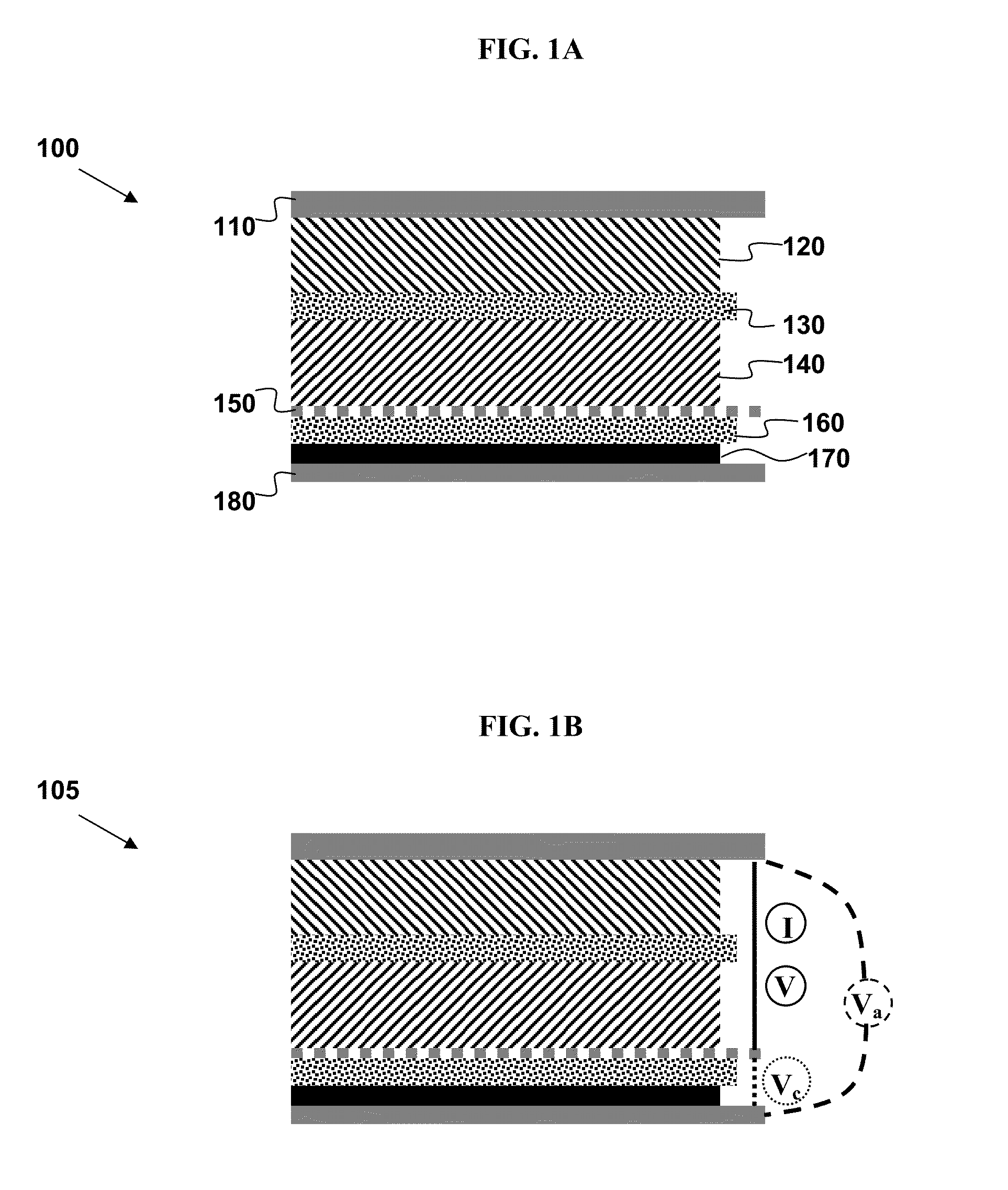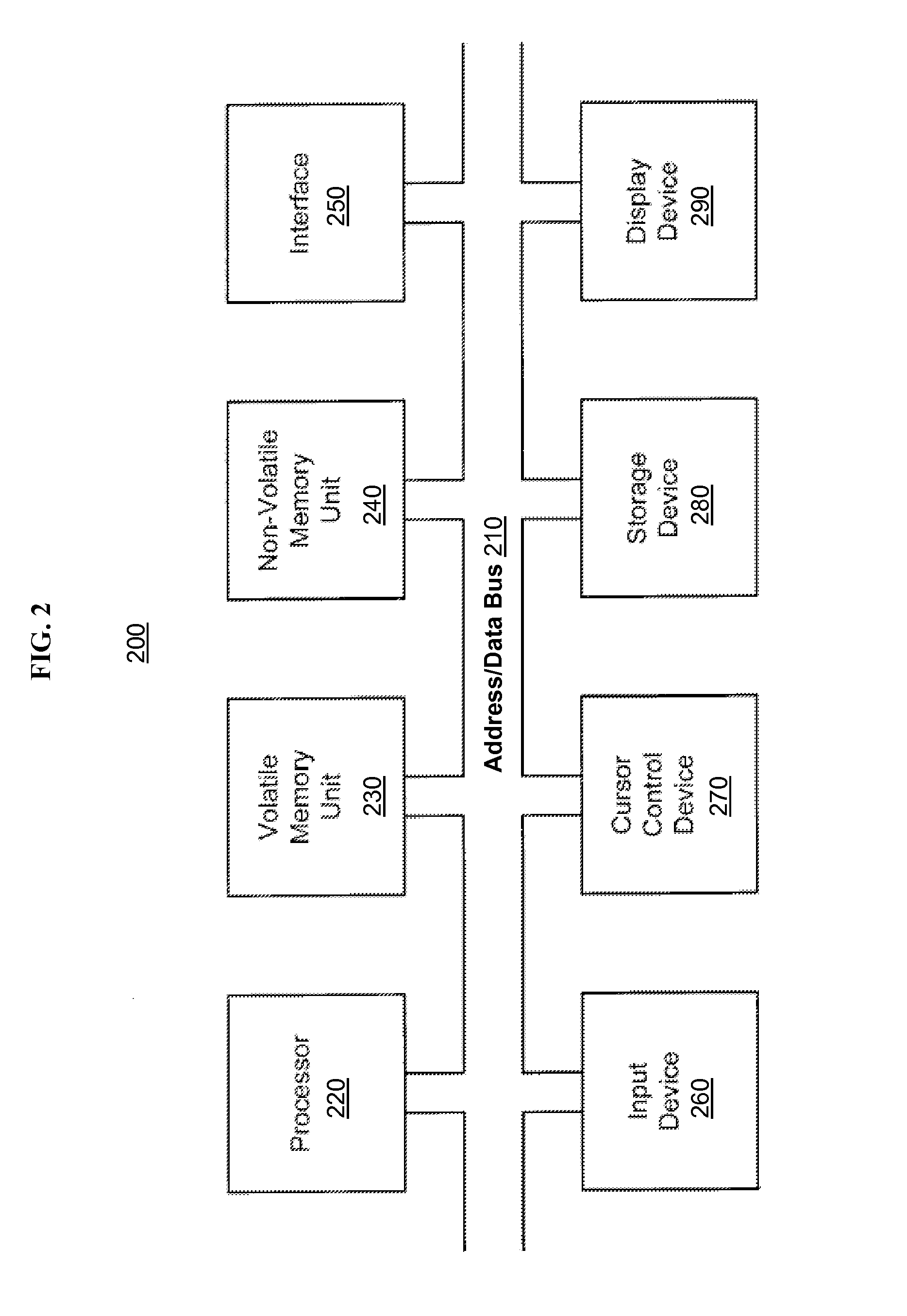Voltage protection and health monitoring of batteries with reference electrodes
a technology of reference electrodes and battery protection, which is applied in the direction of secondary cell servicing/maintenance, instruments, electrochemical generators, etc., can solve the problems of limiting the performance of the battery, unable to prevent damage, and difficult on-line characterization of the battery or fuel cell in the vehicl
- Summary
- Abstract
- Description
- Claims
- Application Information
AI Technical Summary
Benefits of technology
Problems solved by technology
Method used
Image
Examples
example 1
Charge-Discharge Profiles of a Lithium-Ion Battery Cell with a Reference Electrode
[0217]A cell is constructed with a LiNi1 / 3Co1 / 3Mn1 / 3O2 (L333)-based cathode on an Al mesh and a graphite-based anode on Cu foil. In particular, the positive electrode is composed of 84 wt % L333 (Toda Kogyo Corp, NCM-01ST), 3 wt % Super P carbon (MMM SA CARBON), 3 wt % KS6 (TIMCAL), and 10 wt % Kynar Flex 2801 (ELF ATOCHEM) and is pressed onto an Al mesh as a current collector. The negative electrode is composed of 89 wt % CGP-G8 (ConocoPhillips), 3 wt % Super P carbon (MMM SA CARBON), and 8 wt % Kynar Flex 2801 (ELF ATOCHEM) and is cast onto a copper foil. The lithium reference electrode is made from lithium metal compressed onto a copper foil. The capacities of the cathode and anode are evenly matched. The electrolyte is 1 M LiPF6 in (1:1 v / v) ethylene carbonate-dimethyl carbonate solution. Electrochemical experiments are carried out using an Arbin battery tester at a C / 10 rate with a cutoff voltage ...
example 2
Use of a Reference Electrode to Monitor Voltage and Differential Voltage of Electrodes for Enhanced Battery Management, Safety, and Health Assessment
[0224]FIGS. 4A and 4B depict experimental voltage and differential voltage (dV / dQ) from the graphite-based negative electrode (FIG. 4A) and the LiNi1 / 3Co1 / 3Mn1 / 3O2 positive electrode (FIG. 4B) before (solid lines) and after (dotted lines) cycling. The voltages are measured using a lithium reference electrode in a prismatic pouch cell design as in Example 1.
[0225]As a battery ages, the voltages of the positive and negative electrodes diverge due to resistance rise and material degradation. For example, during battery charging, the voltage of the negative electrode (FIG. 4A) is depressed to a lower voltage close to 0 V, while the positive electrode voltage (FIG. 4B) rises quickly due to the increase in resistance as the battery ages.
example 3
Use of Positive and Negative Electrode Voltages for on-Line Battery Capacity Diagnostics
[0226]The voltage from individual electrodes can be used to determine each electrode's state-of-charge (SOC), during normal battery operation. These SOC values can then be used to determine electrode capacity, which tends to degrade during aging. This may be accomplished by using instances, during normal battery operation, when the current is zero (i.e., open-circuit). If this period is long enough (typically a few minutes or more), the measured voltage of each individual electrode approaches its open-circuit voltage (OCV). Using a predetermined SOC-OCV look-up table (at the appropriate temperature), we can deduce the SOC of each electrode.
[0227]The cathode capacity may be estimated according to the following derived equations. The anode equations are the same except for a change of subscripts from c (cathode) to a (anode). If two instances of open-circuit period are identified, i.e., at times ta...
PUM
 Login to View More
Login to View More Abstract
Description
Claims
Application Information
 Login to View More
Login to View More - R&D
- Intellectual Property
- Life Sciences
- Materials
- Tech Scout
- Unparalleled Data Quality
- Higher Quality Content
- 60% Fewer Hallucinations
Browse by: Latest US Patents, China's latest patents, Technical Efficacy Thesaurus, Application Domain, Technology Topic, Popular Technical Reports.
© 2025 PatSnap. All rights reserved.Legal|Privacy policy|Modern Slavery Act Transparency Statement|Sitemap|About US| Contact US: help@patsnap.com



